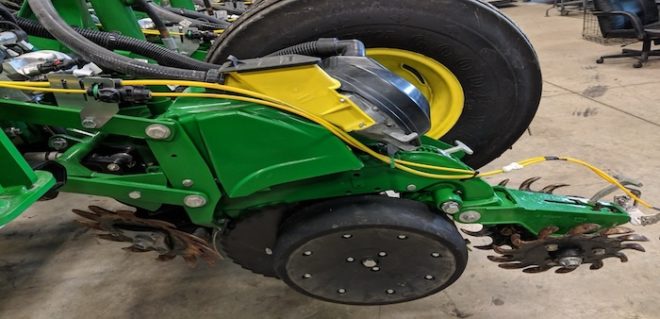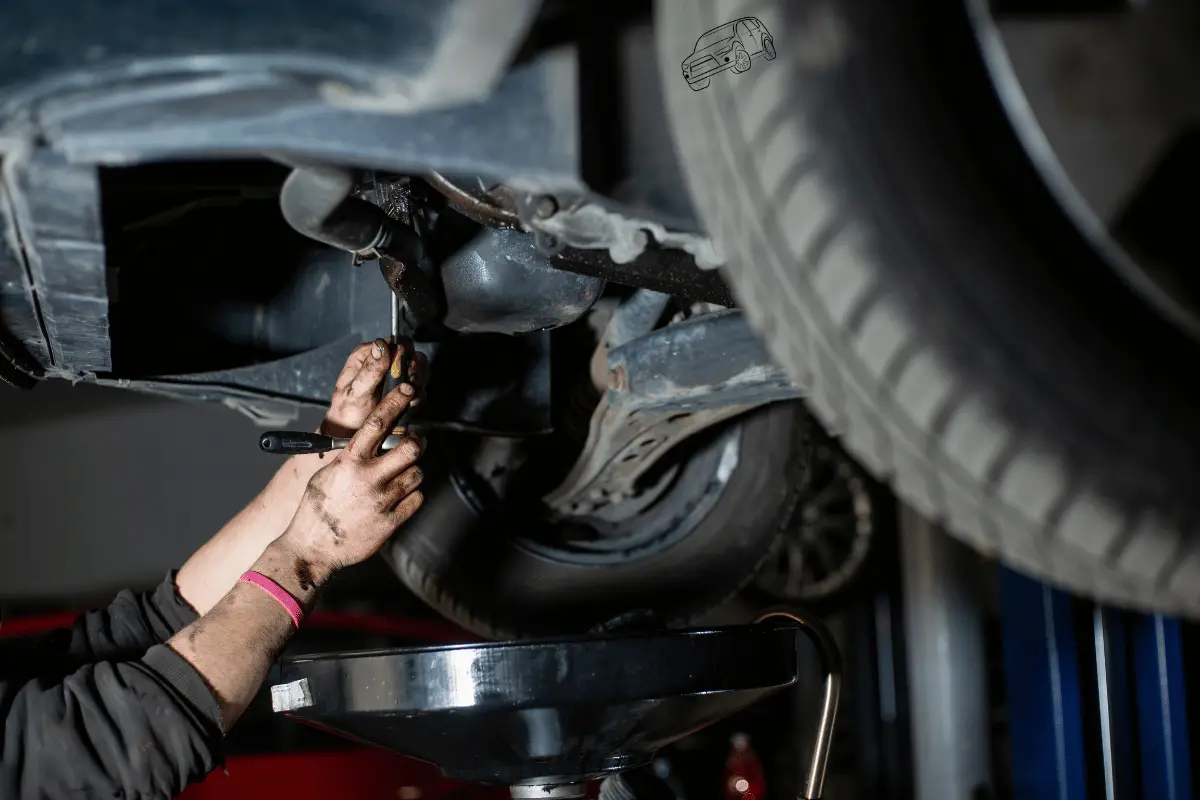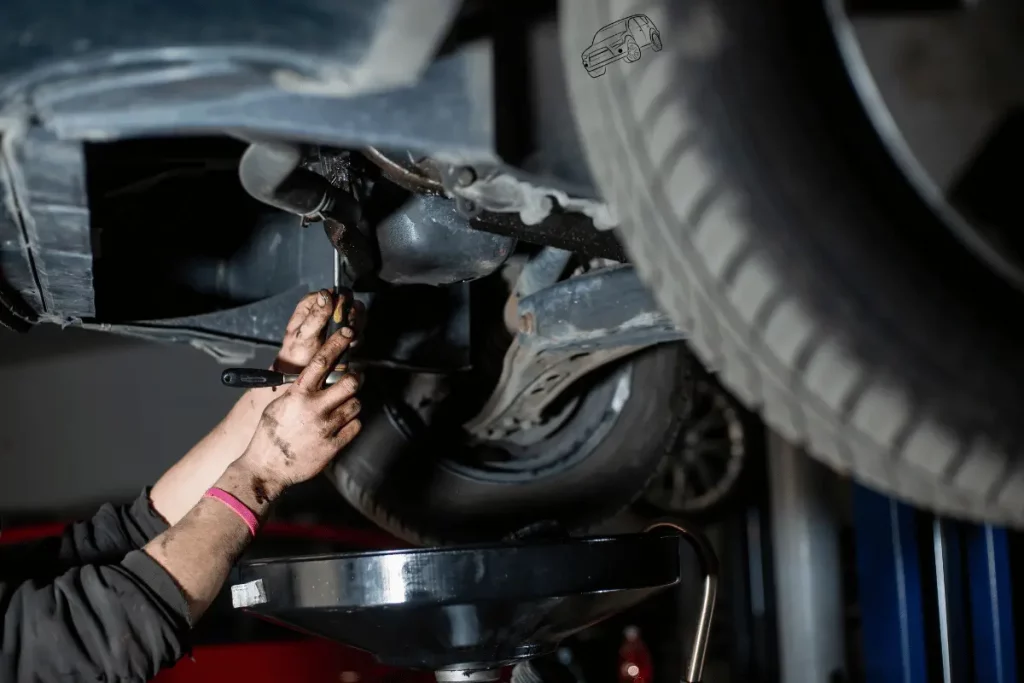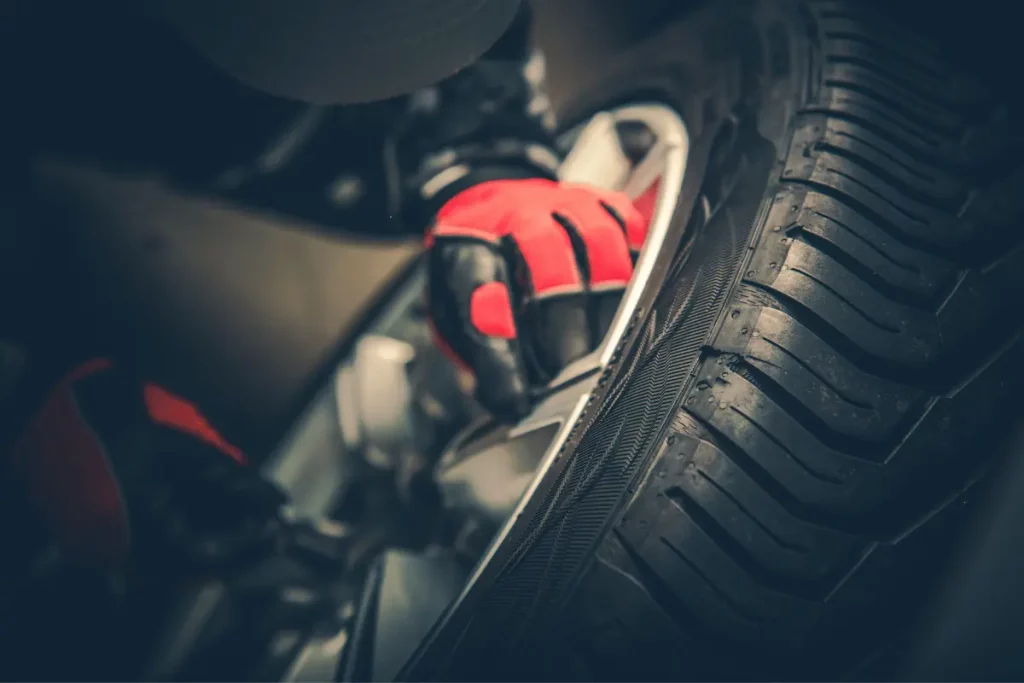This article is from the Automotivean website and discusses How to Balance Tires at Home.
Balancing tires at home can be done using a tire balancer and wheel weights. First, secure the wheel to the balancer, then add weights as needed to achieve balance.
To balance tires at home, you will need a tire balancer, wheel weights, and basic hand tools. This process can help improve the lifespan and performance of your tires while ensuring a smoother ride. By following a few simple steps, you can save time and money by balancing your tires at home, without the need to visit a professional auto shop.
Essential Tools
When it comes to balancing tires at home, having the right tools is essential for a smooth process. To achieve optimal balance, you will need a Tire Balancer and Wheel Weights. Let’s delve into the details of each:
Tire Balancer
A Tire Balancer is a crucial tool that helps in determining the uneven distribution of weight in a tire. It ensures a smooth ride and prevents premature wear and tear on your tires.
Wheel Weights
Wheel Weights are small, precisely calibrated pieces that are attached to the rim of the wheel to counterbalance any uneven weight distribution. These weights play a significant role in achieving the perfect balance for your tires.
Preparing For Balancing
Learn how to balance your tires at home with these simple steps. Save time and money by following these guidelines for a smooth and safe ride.
Preparing for Balancing
Before you start balancing your tires at home, it’s essential to take some important preparatory steps. Safety First, should always be your priority when working with tools and equipment. In this section, we’ll cover the necessary measures to ensure safety while balancing your tires. Additionally, we’ll discuss the supplies you’ll need to gather before beginning the balancing process.
Safety First
Always ensure that your working area is well-lit and clean to prevent accidents. Wear protective gear such as gloves and safety goggles to shield yourself from potential injury. Also, ensure that you have a stable and level working surface to prevent unexpected mishaps while handling heavy equipment.
Gathering Necessary Supplies
Before you begin balancing your tires, ensure that you have all the necessary supplies in place. These supplies include:
– Balancing weights: Ensure that you have the appropriate balancing weights for your specific tire size.
– Wheel weights: Make sure you have the correct type of wheel weights for your vehicle’s wheels.
– Tire balancing machine: Having a tire balancing machine will make the process more efficient.
– Valve stem tool: This tool will aid in removing and installing the valve stem during the balancing process.
– Tire gauge: A tire gauge is essential for checking the tire pressure before and after balancing.
– Wheel weight pliers: These will help you handle and install the wheel weights accurately.
By taking these preparatory steps and ensuring that you have all the necessary supplies, you’ll be well-equipped to balance your tires successfully at home.
Step-by-step Process
Learning how to balance tires at home can save you time and money. While it may seem daunting at first, with the right tools and a clear step-by-step process, you can achieve optimal balance for your tires. In this guide, we will take you through the entire process, from removing the wheels to mounting the tire on the balancer, ensuring a smooth and stable ride for your vehicle.
Removing The Wheels
To start, you’ll want to remove the wheels from your vehicle. Follow these steps:
- Park your vehicle on a level surface and engage the parking brake.
- Loosen the lug nuts on the wheel you wish to balance, but do not remove them just yet.
- Use a jack to lift the vehicle off the ground, ensuring the jack is placed on a secure and sturdy part of the frame.
- Once the vehicle is lifted, use a wrench to fully unscrew and remove the lug nuts.
- Gently pull the wheel off the hub, being cautious not to drop or damage it.
- Repeat these steps for each wheel you plan to balance.
Mounting The Tire On The Balancer
Now that you have removed the wheels from your vehicle, it’s time to mount the tire on the balancer. Follow these steps:
- Place the wheel on the balancer’s spindle, ensuring it is centered and secure.
- If necessary, use adjustable cones or adapters to fit the balancer’s spindle to your wheel’s hub diameter.
- Rotate the wheel to find the heaviest point. This is usually indicated by a mark or label on the tire.
- Once you’ve identified the heaviest point, attach adhesive or stick-on wheel weights to the opposite side of the wheel, approximately 180 degrees away.
- Start with a small weight and gradually increase as needed, checking the balance after each adjustment.
Following these steps will help you achieve a proper tire balance at home. Always remember to double-check the balance after making any adjustments and test the tires on the road to ensure a smooth ride. With a little practice, you’ll be a pro at balancing tires in no time!
Finding The Heavy Spot
Finding the Heavy Spot: Balancing your tires is essential for a smooth and comfortable ride. If you notice uneven tire wear or vibrations while driving, it’s likely that your tires are out of balance. By finding the heavy spot on your tires, you can accurately balance them at home. This will not only save you money but also ensure optimal performance and longevity of your tires.
Marking The Tire:
Start by placing your tire on a flat, level surface. Use a piece of chalk to mark the sidewall of the tire where it rests on the ground – this will be your reference point. Be sure to mark both the top and bottom of the tire to ensure accuracy.
Rotating The Tire:
Next, rotate the tire slowly until the chalk mark is at the top. Carefully release the tire and observe its movement. If the chalk mark remains at the top, the tire is well-balanced. However, if it moves to the side or bottom, it indicates that the tire is heavier in that particular spot.
Repeat this process for each tire, marking and rotating until you identify the heavy spot on each one. The heavy spot may differ for each tire, so be thorough in your examination.
Once you’ve identified the heavy spot on a tire, it’s time to balance it. There are various methods you can use to achieve this, such as placing small weights on the opposite side or using a balancing machine.
Remember: Properly balanced tires improve your driving experience, increase the lifespan of your tires, and reduce the risk of premature wear or damage. Take the time to balance your tires at home and enjoy a smoother and safer ride.
Applying Wheel Weights- How to Balance Tires at Home
When applying wheel weights to balance tires, it is essential to understand the types of wheel weights available and their proper placement. Properly applying wheel weights will ensure that your tires are balanced, reducing vibrations and extending their life.
Types Of Wheel Weights- How to Balance Tires at Home
Wheel weights come in various types to suit different wheel designs and materials. Clip-on wheel weights are commonly used for alloy wheels, while adhesive wheel weights are suitable for steel wheels. Coated wheel weights are designed to protect your rims from scratches, and hammer-on wheel weights are used for heavy-duty trucks and trailers.
Proper Placement- How to Balance Tires at Home
When applying wheel weights, their placement is crucial for ensuring a balanced tire. Static wheel balance involves placing the wheel weights on the centerline of the wheel, while dynamic wheel balance requires weights to be distributed around the wheel to compensate for any imbalances.
Testing The Balance- How to Balance Tires at Home
Learn how to balance tires at home to ensure a smooth and safe ride. With the right tools and techniques, testing the balance of your tires can be done quickly and easily. By taking care of your tire maintenance yourself, you can save time and money.
Testing the Balance
Using A Balancer Or Bubble Level
Inspect the wheel assembly for imbalance by utilizing a balancer or bubble level.
Fine-tuning If Needed to Balance Tires at Home
Adjust any counterweights to fine-tune the balance to perfection.
Final Steps And Tips
With these final steps and tips, you can learn how to balance tires in the comfort of your own home. Follow the simple instructions to achieve a smooth ride and ensure proper tire wear for increased safety on the road. Mastering this essential DIY maintenance task will save you time and money.
The final steps to balancing your tires at home are crucial for optimal performance and safety.
Reinstalling The Wheels- How to Balance Tires at Home
After balancing, carefully reinstall the wheels back onto the vehicle using a torque wrench to ensure proper tightening.
Maintenance Recommendations- How to Balance Tires at Home
– Regularly check your tire pressure to maintain balance and performance.
– Inspect tires for any signs of wear or damage and replace them as needed.
– Repeat the balancing process periodically to ensure continued smooth and safe driving.
Remember to follow these tips to keep your tires balanced and your vehicle running smoothly.

Credit: www.no-tillfarmer.com
Frequently Asked Questions Of How To Balance Tires At Home
Can You Balance Your Tires Yourself?
Yes, you can balance your tires yourself using a tire balancing machine for optimal performance.
What Is The Best Method For Balancing Tires?
The best method for balancing tires is to use a computerized or electronic wheel balancer. It ensures an even distribution of weight for smoother driving. Regular tire balancing enhances performance and extends tire lifespan. Always consult a professional for the most effective method.
How Do You Fix An Unbalanced Tire?
To fix an unbalanced tire, take it to a professional mechanic for wheel balancing services. They’ll use specialized equipment to ensure even weight distribution for a smoother ride.
How Do I Know If My Tires Were Balanced Correctly?
To verify proper tire balancing, check for even wear on your tires, smooth driving experience without vibrations, and improved fuel efficiency. If you notice any uneven wear or vibrations, it may indicate that your tires were not balanced correctly and require further adjustment.
How Can I Balance Tires At Home?
To balance tires at home, you’ll need a bubble balancer, wheel weights, a jack stand, and a lug wrench. Follow these steps: jack up the car, remove the wheel, clean the wheel and hub, mount the wheel on the bubble balancer, identify the heavy spot, and attach the required wheel weight.
Is Tire Balancing Necessary For My Vehicle?
Yes, tire balancing is necessary for your vehicle. Properly balanced tires enhance safety, improve fuel efficiency, prevent premature tire wear, and provide a smoother ride. It also reduces vibrations and extends the lifespan of your tires.
Last Word about How to Balance Tires at Home
Balancing your tires at home is a simple yet effective way to ensure a smooth and safe ride. By following the steps outlined in this guide, you can save time and money while maintaining optimal vehicle performance. With the right tools and techniques, you can achieve professional results without the need for a professional mechanic.
Take control of your car’s maintenance and enjoy a more comfortable driving experience.


